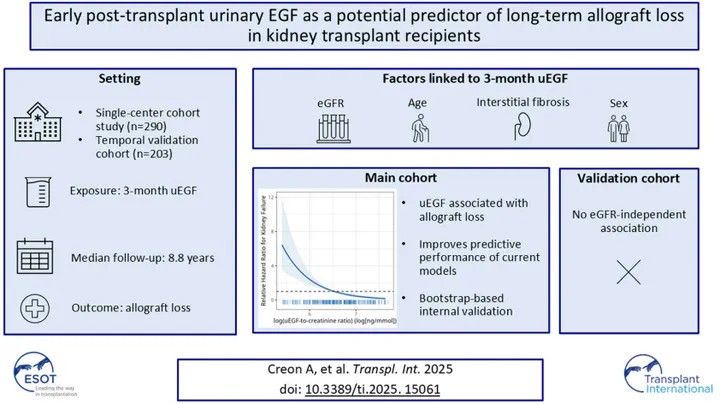Early Post-Transplant Urinary EGF as a Potential Predictor of Long-Term Allograft Loss in Kidney Transplant Recipients

Background
Improved biomarkers are needed to enhance prognostication in kidney transplantation. We evaluated urinary Epidermal Growth Factor (uEGF) as a predictor of long-term allograft loss.
Methods
We conducted a prospective, single-center cohort study of 290 adult kidney transplant recipients with uEGF measured 3 months post-transplant. The primary outcome was allograft loss, defined as return to dialysis or pre-emptive retransplantation. Multivariable cause-specific Cox models assessed the independent association between uEGF and allograft loss. Model performance was compared to the iBox prediction model using 7-year time-dependent AUC and Akaike Information Criterion (AIC), with internal validation via bootstrap resampling. Temporal validation was performed in an independent cohort of 203 patients.
Results
uEGF correlated with markers of chronic injury, including eGFR, donor age, and interstitial fibrosis. After a median 8.8-year follow-up, lower uEGF was independently associated with allograft loss (adjusted HR 0.19; 95% CI, 0.11–0.32). Adding uEGF to the iBox improved discrimination (AUC 0.72 vs. 0.63) and reduced AIC (383 vs. 394). While results were robust to internal validation, temporal validation did not show an independent association of uEGF with allograft loss.
Conclusion
These findings suggest uEGF may provide independent prognostic value, but further studies in larger and more diverse cohorts are needed to confirm its clinical utility.